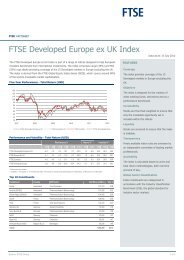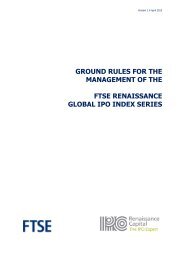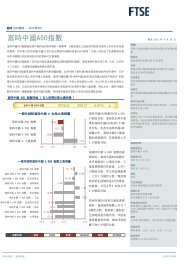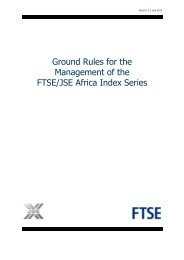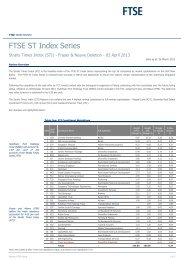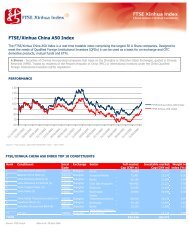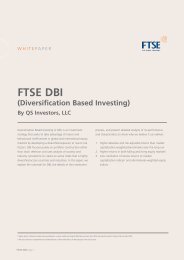Create successful ePaper yourself
Turn your PDF publications into a flip-book with our unique Google optimized e-Paper software.
Employment in London's financial district will have fallen<br />
by 28,000 in 2008, with a further 34,000 to go in 2009 as a<br />
result of the credit crunch. The slump could take the City<br />
back to levels last seen in 1998.<br />
That is the bad news and there is plenty of it. However,<br />
over-development is nowhere near as excessive as in the<br />
1990s and lest we forget, last time round Canary Wharf and<br />
London Docklands were coming on line, offering huge<br />
amounts of space to rival the City’s dominance. So in 2008<br />
take-up, while clearly down, is still expected to reach 4m<br />
ft², compared with a five-year average of 5m ft² to 6m ft².<br />
What the City needs is alternative financing and in an age<br />
where it has traded on globalisation, appropriately enough<br />
it has turned to the cash-rich emerging nations, with the<br />
Middle East a particular target. Can and will the Gulf<br />
respond positively? “To date, the City market has<br />
performed differently to the West End market, in the style<br />
of Middle Eastern money that it has attracted,” says<br />
Andrew Hawkins, a director in JLL’s City investment team.<br />
“The West End market has been characterised by more<br />
active private wealth management or royal family money,<br />
but has largely been focused on wealth preservation in the<br />
super-prime markets of Mayfair and St James. Examples<br />
include the Saudi Arabian royal family (Lancer Trust)<br />
buying 50 Stratton Street for £130m on a 5% yield.<br />
Similarly, a private Middle Eastern investor acquired 63 St<br />
James’s Street, for £31.12m, again reflecting a yield of<br />
5.00%,”says Hawkins.<br />
This, he says, contrasts with the City, where Middle<br />
Eastern investors have been seeking to move further up the<br />
risk curve. In particular, Hawkins cites an appetite from<br />
‘petro-dollar’investors for development opportunities.<br />
Amid the turmoil the City has scored extraordinary<br />
successes for landmark developments, with a strong Gulf<br />
connection. For example, the State General Reserve Fund<br />
of Oman is one of three investors behind Heron’s<br />
development at Heron Tower on Bishopsgate. Likewise, a<br />
syndicate of Middle Eastern private family houses and<br />
institutional investors is backing Arab Investments'<br />
proposed development at The Pinnacle, also on<br />
Bishopsgate. Finally, the Qatari royal family is the<br />
dominant partner behind Irvine Sellar’s development of<br />
the Shard, on the Southbank.<br />
Peter Damesick, head of UK research, CBRE says that<br />
“Within Europe, the UK, and London in particular,<br />
maintained its absolute attractiveness to Middle Eastern<br />
money in the first half of 2008 compared to 2007. At the<br />
same time Middle Eastern investors have increased in<br />
importance within the property investment market which<br />
is showing substantially lower volumes,” says Peter<br />
Damesick, head of UK research, CBRE.<br />
CBRE Research shows that in the first half of 2008 Middle<br />
Eastern investors spent £1.3bn acquiring UK real estate,<br />
which represented 73% of all Middle Eastern investment in<br />
Europe, with London alone accounting for 60%.The UK and<br />
London’s shares of Middle Eastern investment in Europe in<br />
H1 2008 were double those in 2007. In the City office<br />
F T S E G L O B A L M A R K E T S • J A N U A R Y / F E B R U A R Y 2 0 0 9<br />
market, Middle Eastern investors spent £530m in 2008 to the<br />
end of the third quarter, compared to £524m in the whole of<br />
2007. The Middle Eastern share of total investment in the<br />
City office market by the end of November 2008 was 22%,<br />
compared to 7% through the whole of 2007.<br />
Headline projects<br />
Headline projects have provided another fillip. HSH<br />
Nordbank extended a loan used to purchase the Pinnacle<br />
tower site in the City for another year, as developer Arab<br />
Investments pushes ahead with its speculative<br />
development plans. The German bank funded the £200m<br />
purchase of the site in May last year, from German fund<br />
manager Union Real Estate, for a consortium fronted by<br />
Arab Investments. Arab Investments plans to develop the<br />
Kohn Pedersen Fox-designed scheme in Bishopsgate area<br />
and the 945 ft Pinnacle will be one of London’s tallest<br />
towers. It will have 63 floors and around 1m ft² of office<br />
space. At the start of 2008 privately-owned Sellar Property<br />
Group defied the critics and the credit crunch to secure<br />
funding for their enormous London Bridge Shard concept.<br />
It is a project with which they have become synonymous<br />
and began with the fractious partnership with former<br />
development partners Simon Halabi and CLS Holdings,<br />
which became immersed in lawsuits and an expensive and<br />
long-drawn-out public planning inquiry.<br />
The entire 2m ft² scheme was almost derailed when<br />
Sellar attempted to secure funding just at the moment the<br />
world’s credit markets plunged into crisis. But in January<br />
Sellar clinched backing from a consortium of four Qatari<br />
banks (Qatar National Bank, Q-Invest, Barwa International<br />
and the Qatar Islamic Bank) to bankroll the ambitious<br />
Renzo Piano-designed scheme.Four Qatari banks snapped<br />
up 80% of the Shard's development rights at a very<br />
competitive price of less than £100m. However, to secure<br />
the deal Sellar had to reduce its holding of development<br />
rights from one third to 20%. Government-owned<br />
Transport for London is the key tenant in a 200,000 ft²<br />
office pre-let on an initial £38/ft², rising to £42/ft² on<br />
completion. It accounts for about a third of the initial office<br />
provision. However, Sellar was unable to retain accountant<br />
PricewaterhouseCoopers, the original tenant at Southwark<br />
Towers, which will make way for the Shard, and had to pay<br />
£70m to buy in the long lease.<br />
With huge schemes still getting the green light the City’s<br />
demise it not yet set in stone. Despite conjecture about<br />
whether the current crisis will weaken the City, London sits in<br />
the most opportunistic time zone to serve both the Asia Pacific<br />
and North American markets. Moreover, London is one of the<br />
few global cities whose population is forecast to continue to<br />
grow and has an infrastructure which is thousands of years<br />
old,” stresses JLL’s Hawkins. “Cities are about people and<br />
talent.While talent can be attracted by financial rewards, there<br />
will always be a significant element of the employment<br />
market that is driven by a wider more nebulous concept,<br />
namely quality of life for family, schools and culture, all of<br />
which London has in spades.<br />
85



